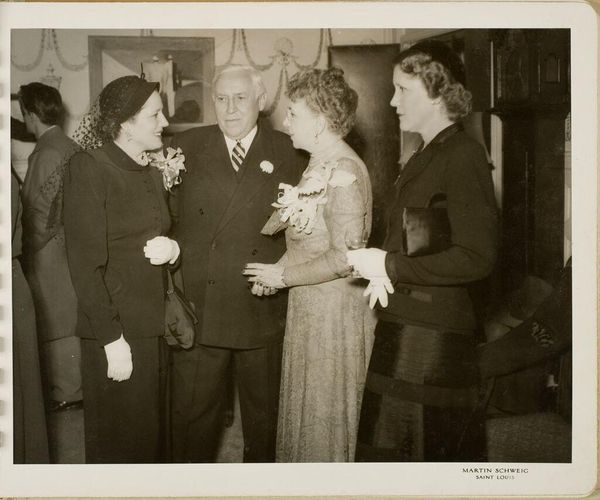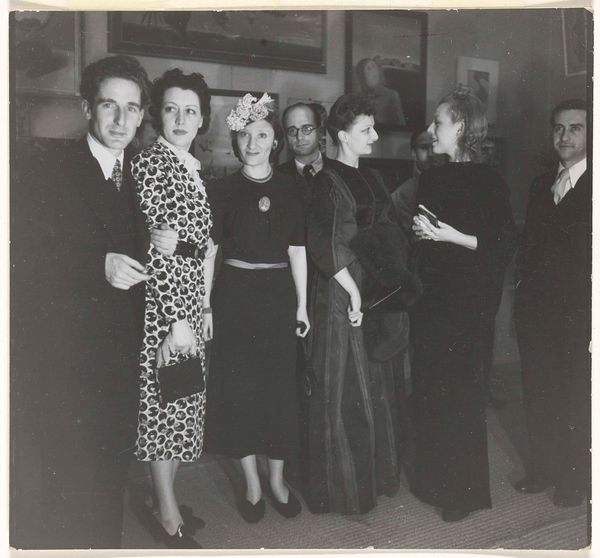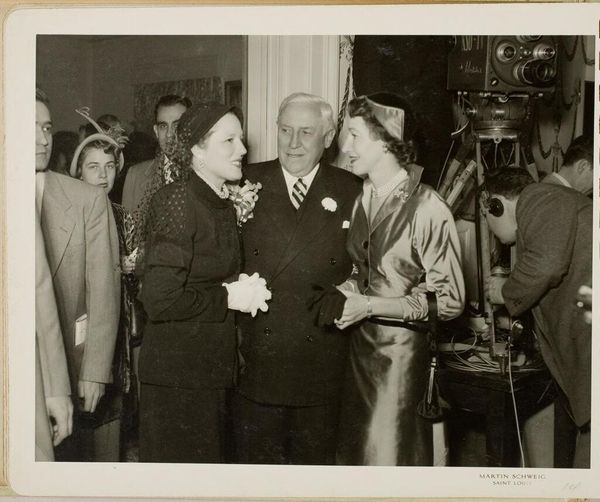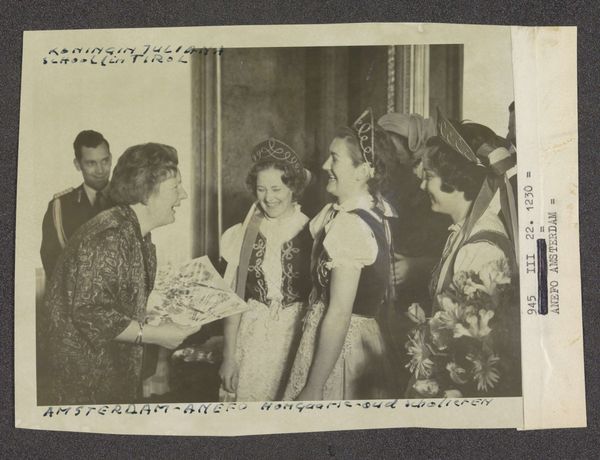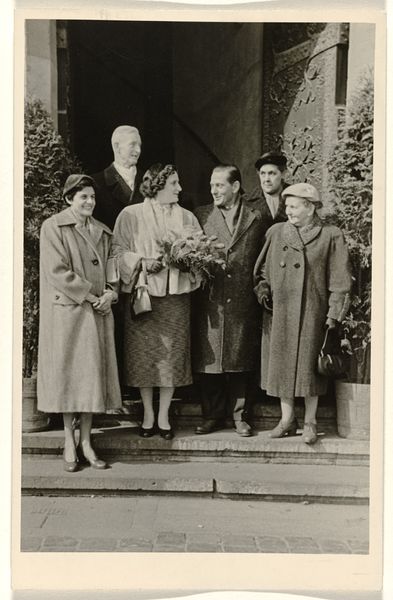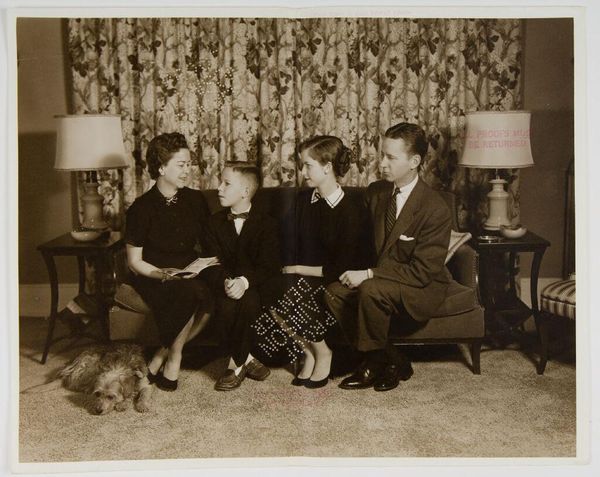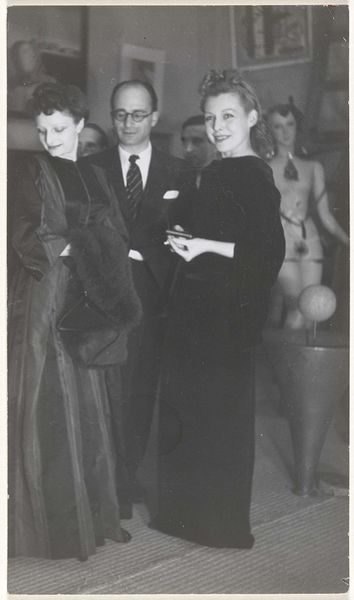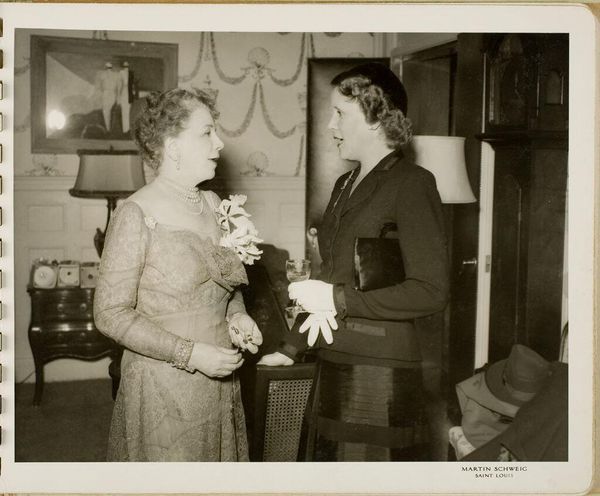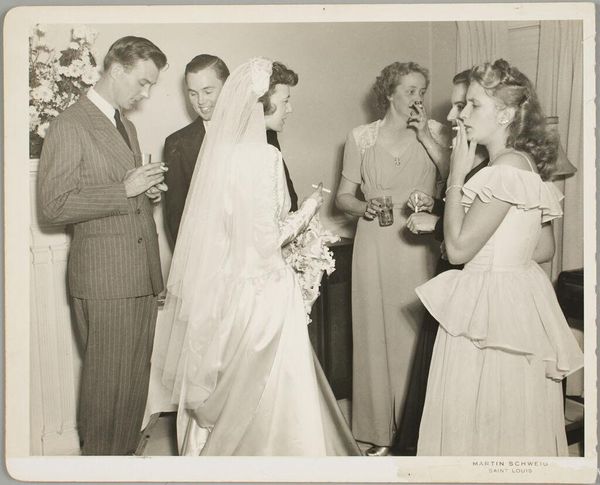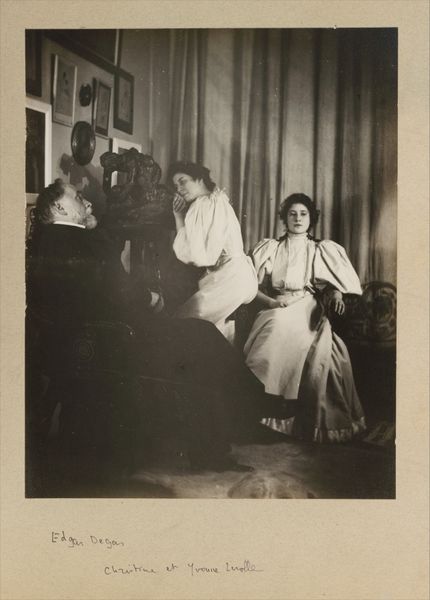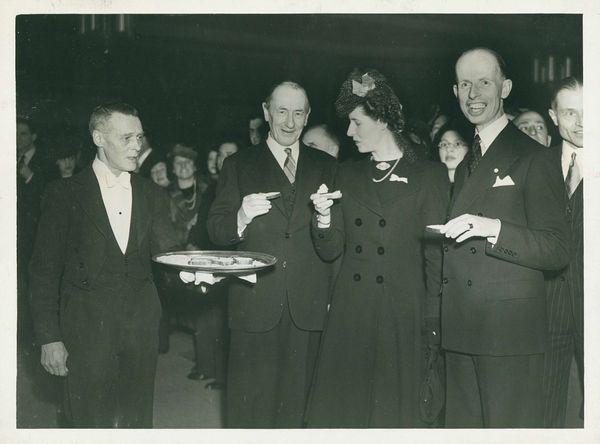
Dimensions: height 143 mm, width 116 mm
Copyright: Rijks Museum: Open Domain
Editor: This is a photograph titled "Opening surrealisme-tentoonstelling Galerie Robert, Amsterdam 1938," taken in 1938 by Lilly Samuel, using gelatin silver print. It captures a group of people at what appears to be an art opening. It feels…candid, like a glimpse into a specific moment. What strikes you about this piece? Curator: It’s interesting how this image, ostensibly documenting an artistic avant-garde, simultaneously reveals the social milieu that enables and consumes such movements. What does it mean to document an "opening" and what power dynamics are at play? Consider the context: 1938. Surrealism, though already established, was facing increasing pressure, seen as degenerate by rising fascist regimes. These individuals are not simply observing art, they are participating in an act of cultural and political resistance. Editor: Resistance, really? Just by attending a gallery opening? Curator: Absolutely. Think about who is in this photograph, and who is behind the camera. The simple act of gathering becomes a powerful statement against censorship and ideological conformity. Lilly Samuel, the photographer, was a Jewish woman documenting a marginalized movement, thus layering complexities within a single frame. Consider how the patterns on the clothing – the polka dots, the repetitive circles – echo the disruptions and jarring juxtapositions that defined Surrealism itself. Editor: So the clothing choices are another form of expression. Is it fair to see this event, and thus the photo, as a statement of solidarity in difficult times? Curator: Precisely. These are not just fashionable patrons; they are active participants in a cultural dialogue, subtly subverting the norms and expectations of their time. By engaging with Surrealism, they endorse a worldview that challenges power structures and champions the unconscious. The camera is no neutral tool; it’s capturing defiance, resilience, and a shared commitment to artistic freedom. Editor: That gives me a completely different perspective. I see it less as a simple snapshot now and more as a historical record of cultural resistance. Curator: Indeed. Understanding the intersection of art, politics, and identity allows us to view this seemingly ordinary photograph as a powerful testament to the human spirit's ability to resist even in the face of adversity.
Comments
No comments
Be the first to comment and join the conversation on the ultimate creative platform.


